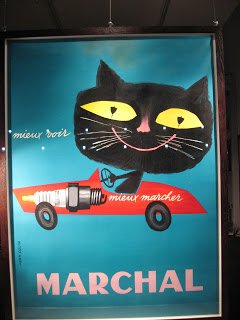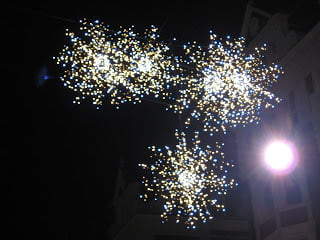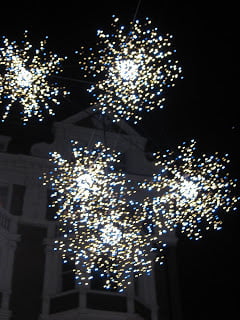About 10 million years ago the enzyme in our bodies used to detoxify alcohol, dehydrogenase…
The Play is the Thing
Up late. Was it any
wonder?
wonder?
Another cool windy day.
It had rained but was dry A.M.
Didn’t hear from my friend Jean Paul so decided to see about tickets for
the theatre. The two shows I was pining
to see were Berenice at the Donmar and Allan Bennett’s latest, People, at the
National. No chance for either. Decided to try the National anyway, so jumped
in a cab at Trafalgar Square. Didn’t
know, however, that all the roads and several bridges were closed in
preparation for Remembrance Day services Sunday. Cab driver was pleasant, and gave me a
special tour of the back end of Westminster, but ten pounds later I was only
just over the Waterloo Bridge. All was
not lost as I did score tickets for Scenes of an Execution at the Lyttleton.
It had rained but was dry A.M.
Didn’t hear from my friend Jean Paul so decided to see about tickets for
the theatre. The two shows I was pining
to see were Berenice at the Donmar and Allan Bennett’s latest, People, at the
National. No chance for either. Decided to try the National anyway, so jumped
in a cab at Trafalgar Square. Didn’t
know, however, that all the roads and several bridges were closed in
preparation for Remembrance Day services Sunday. Cab driver was pleasant, and gave me a
special tour of the back end of Westminster, but ten pounds later I was only
just over the Waterloo Bridge. All was
not lost as I did score tickets for Scenes of an Execution at the Lyttleton.
Arrived at the 02 with doubles underway. Today, unlike all the other sessions, I was
at the reverse end of the court, under the media booths. That put me at a disadvantage to see the VIP
section where, again, Sir Ian was in residence, as well as Richard Wilson, an
actor I don’t know but who got huge applause and is much loved for an old
catchphrase “I don’t believe it.”
at the reverse end of the court, under the media booths. That put me at a disadvantage to see the VIP
section where, again, Sir Ian was in residence, as well as Richard Wilson, an
actor I don’t know but who got huge applause and is much loved for an old
catchphrase “I don’t believe it.”
The Bryan Brothers made a series of egregious errors and
played lackadaisical but nevertheless brought it to a set apiece before the
mandatory 10 point tiebreak. At that
point Paes/Stepanek stepped on the gas and brought it home. It looked like Andy Roddick was in the
player’s box, but why he would be in London is anyone’s guess.
played lackadaisical but nevertheless brought it to a set apiece before the
mandatory 10 point tiebreak. At that
point Paes/Stepanek stepped on the gas and brought it home. It looked like Andy Roddick was in the
player’s box, but why he would be in London is anyone’s guess.
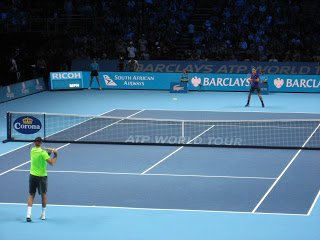 |
| Laziest flash-free no-zoom pic from a spectator seat ever. Delpo in the near court, Fed receiving. |
November 10, 2012, Roger Federer and Juan Martin Del
Potro. Fed can go 3-0 here and pull it
out for the tourny. He doesn’t, and that’s a
shame. He comes out first set with his A-
game, some hot shots, some not so hot, and is ultimately Delpo’s toy. His myriad unforced errors told the whole story. But he was scintillating in the second. One thing that simply doesn’t translate to TV
is his touch. You can appreciate his
remarkable shot selection and the variety of his game, but you can’t get a
sense of how he brushes the ball, pounds it, slams it, touches it, all in a
single rally. He really is a
perfectionist. But when it came to the
third set he faltered at the start and never regained his poise. His post-30 game seems to be characterized by
flashes of brilliance rather than the pre-30 consistency. A wide kick-up serve at only 108 mph or so
served him very well, but he only went there a few times, yet each one was a
winner.
Potro. Fed can go 3-0 here and pull it
out for the tourny. He doesn’t, and that’s a
shame. He comes out first set with his A-
game, some hot shots, some not so hot, and is ultimately Delpo’s toy. His myriad unforced errors told the whole story. But he was scintillating in the second. One thing that simply doesn’t translate to TV
is his touch. You can appreciate his
remarkable shot selection and the variety of his game, but you can’t get a
sense of how he brushes the ball, pounds it, slams it, touches it, all in a
single rally. He really is a
perfectionist. But when it came to the
third set he faltered at the start and never regained his poise. His post-30 game seems to be characterized by
flashes of brilliance rather than the pre-30 consistency. A wide kick-up serve at only 108 mph or so
served him very well, but he only went there a few times, yet each one was a
winner.
Delpo, who even at his best looks lazy (if he was an animal
it would be Eeyore, his Spanish even has a bit of that drawl), had a determined focus and relentless returns despite the
lope and sulk. They both suffered bad
line calls, Delpo once from the umpire even, and both three times wrong from a
single linesman, and each gave us the tweener, Delpo successfully, Fed not, so
it was up, down, entertaining and taut.
But by the end, the bitter end, Fed fell away and Juan Martin seized the
moment. Great tennis nonetheless.
it would be Eeyore, his Spanish even has a bit of that drawl), had a determined focus and relentless returns despite the
lope and sulk. They both suffered bad
line calls, Delpo once from the umpire even, and both three times wrong from a
single linesman, and each gave us the tweener, Delpo successfully, Fed not, so
it was up, down, entertaining and taut.
But by the end, the bitter end, Fed fell away and Juan Martin seized the
moment. Great tennis nonetheless.
Made my way back to the Sheraton but instead of transferring
at Green Park I transferred at Westminster and stopped at Sloane Square to pick
up some fruit and water at Partridges.
There was a Saturday market in the common area west, including of all
things a children’s choir singing Christmas carols. It did seem a bit premature for Good King
Wenceslas…
at Green Park I transferred at Westminster and stopped at Sloane Square to pick
up some fruit and water at Partridges.
There was a Saturday market in the common area west, including of all
things a children’s choir singing Christmas carols. It did seem a bit premature for Good King
Wenceslas…
Quick turn around for the theatre at, yes, 7:30. Theatre is always at 8 Stephen says! Howard Barker suffered great controversy in
the early 80s for a National production of The Romans in Britain. Or so I remembered having seen it. But memory had played a trick; that was
Howard Brenton. Barker, an accomplished
dramatist, not (apparently) much produced in the UK, is a different
entity.
the early 80s for a National production of The Romans in Britain. Or so I remembered having seen it. But memory had played a trick; that was
Howard Brenton. Barker, an accomplished
dramatist, not (apparently) much produced in the UK, is a different
entity.
Scenes from an Execution is, on the exterior anyway, a play
about art. Serious, with an intellectual
bent, but passionate on its subject. The
thing about sincere attempts at dealing with art—think Pollock or Caravaggio—is
that they have a tendency to either be theatrically indulgent or didactic. It’s a trick to get it right. Maugham’s Moon and Sixpence I thought was the
perfect balance—and you could probably read it in less than two and three
quarter hours… I would say, on the
level of being about art, SfaE wasn’t a success. But of course, as a remount from the 80s, it
must have something? And, yes,
metaphorically it’s all about politics, social and sexual mores, and much other
of an intellectual vein, hung on the artist’s easel. The crux is, though, whether truth is a
service to society. And in this sense,
it is rather poignant, given Julian Assange holed up in an embassy for
revealing secrets and one monumental scandal following another in China, the
Arab world, India, etc., despite such ardent attempts to defend the status
quo. There is, too, a sort of Elizabeth
Kubler Ross element, of moving through truth and its value (and this isn’t
offhand; the dramatist literally shifts through denial, anger, bargaining,
depression—“oh why am I being bad to artists, the only people I truly love”—to acceptance. A little bit of an obvious yawn). Even as society understands and accepts a new
paradigm does it just become the ruse for which to hang another mythology
on? And so forth. And you can see by my description that while
The Bodyguard on the Strand was standing room only, Scenes from an Execution
had good seats available right up until performance.
about art. Serious, with an intellectual
bent, but passionate on its subject. The
thing about sincere attempts at dealing with art—think Pollock or Caravaggio—is
that they have a tendency to either be theatrically indulgent or didactic. It’s a trick to get it right. Maugham’s Moon and Sixpence I thought was the
perfect balance—and you could probably read it in less than two and three
quarter hours… I would say, on the
level of being about art, SfaE wasn’t a success. But of course, as a remount from the 80s, it
must have something? And, yes,
metaphorically it’s all about politics, social and sexual mores, and much other
of an intellectual vein, hung on the artist’s easel. The crux is, though, whether truth is a
service to society. And in this sense,
it is rather poignant, given Julian Assange holed up in an embassy for
revealing secrets and one monumental scandal following another in China, the
Arab world, India, etc., despite such ardent attempts to defend the status
quo. There is, too, a sort of Elizabeth
Kubler Ross element, of moving through truth and its value (and this isn’t
offhand; the dramatist literally shifts through denial, anger, bargaining,
depression—“oh why am I being bad to artists, the only people I truly love”—to acceptance. A little bit of an obvious yawn). Even as society understands and accepts a new
paradigm does it just become the ruse for which to hang another mythology
on? And so forth. And you can see by my description that while
The Bodyguard on the Strand was standing room only, Scenes from an Execution
had good seats available right up until performance.
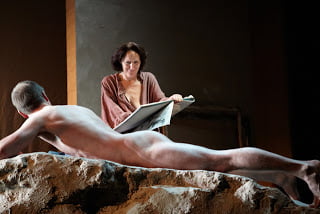 |
| The artists considers the bum. And lest you think I’m joking, I’m not. That’s the bit. Geddit? |
Fiona Shaw, best known perhaps for True Blood, gave a signal
performance as a feminist artist, but the standout was Jay Simpson as The
Doge. For me, the play was erratic and
at times artistically extravagant. But
the design was spectacular. A much used
third person commentator in the first act, a character called The Sketchbook, appears
as if a video, suspended in a white box, to start. The box is propelled toward the audience
giving the impression of a zoom lens. It
was absolutely compelling. Dramatic
lighting, shadow, scrims and oversized set pieces were brilliant. But the costumes, well the costumes, the rags
which weren’t so ragged and the finery which was not so fine, and the shoes
versus boots and the whole palette of the clothing was not only uneven but
confusing. Period piece? Yes, no?
performance as a feminist artist, but the standout was Jay Simpson as The
Doge. For me, the play was erratic and
at times artistically extravagant. But
the design was spectacular. A much used
third person commentator in the first act, a character called The Sketchbook, appears
as if a video, suspended in a white box, to start. The box is propelled toward the audience
giving the impression of a zoom lens. It
was absolutely compelling. Dramatic
lighting, shadow, scrims and oversized set pieces were brilliant. But the costumes, well the costumes, the rags
which weren’t so ragged and the finery which was not so fine, and the shoes
versus boots and the whole palette of the clothing was not only uneven but
confusing. Period piece? Yes, no?
 |
| View From Waterloo Bridge, clipped by someone with the chops for night photos. |
Afterward I did a very sentimental thing, from back in the
days when I lived in Fulham. I walked
across the Waterloo bridge—maybe the least architecturally interesting bridge
in Europe but with the most expansive view of the glorious London skyline, from
St. Paul’s to the Eye to the HP—and caught a bus home. Of course when I was young and broke I would
walk as far as I had to before boarding the 22 or 11 (to pay a lower fare), but I hopped on an 11 on
the Strand which beckoned, it jetted past the Savoy, turned towards the Thames at Trafalgar
Square, whipped past the HP and Westminster Abbey, and then sped through
Victoria towards Sloane Square along tony Hospital Rd. There is nothing quite like the top front
seat on a double decker wildly negotiating the twisty terrain of central
London (not in traffic). Back at the chic hotel there
were young elites teeming through the common areas at, what the signage proclaimed was,
Anissa’s 18th. It seems
impossible to get to bed before midnight; at least I’m not alone.
days when I lived in Fulham. I walked
across the Waterloo bridge—maybe the least architecturally interesting bridge
in Europe but with the most expansive view of the glorious London skyline, from
St. Paul’s to the Eye to the HP—and caught a bus home. Of course when I was young and broke I would
walk as far as I had to before boarding the 22 or 11 (to pay a lower fare), but I hopped on an 11 on
the Strand which beckoned, it jetted past the Savoy, turned towards the Thames at Trafalgar
Square, whipped past the HP and Westminster Abbey, and then sped through
Victoria towards Sloane Square along tony Hospital Rd. There is nothing quite like the top front
seat on a double decker wildly negotiating the twisty terrain of central
London (not in traffic). Back at the chic hotel there
were young elites teeming through the common areas at, what the signage proclaimed was,
Anissa’s 18th. It seems
impossible to get to bed before midnight; at least I’m not alone.
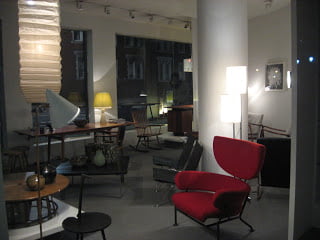 |
| Different versions of the lights around and on Sloane Square |

